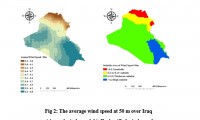18 December 2012, Rome - The global forest products industry is slowly recovering from the economic crisis, with the Asia-Pacific region and particularly China taking the lead.
New data published by FAO indicate that on average global production of the main forest products grew by 1 to 4 percent in 2011 compared to 2010 showing that countries are slowly coming out of recession.
Production of wood-based panels and paper in 2011, for example, was above the pre-crisis levels of 2007 and appears to be growing relatively strong in most regions, whereas global production of industrial roundwood despite an increase of 3 percent in 2011 over the figure for 2010 has not so far reached the pre-crisis levels.
In the markets for pulp and paper, overall growth was very modest over the period 2007-2011, with a growth trend of about one percent per year. However, this conceals major differences at the regional level, where pulp and paper production and consumption is increasing significantly in the Asia-Pacific region, but generally declining in Europe and North America.
China strengthens its position in forest products markets
China is increasing its importance as producer of forest products, becoming the world’s second largest producer of sawnwood after USA and having overtaken Canada. China has also increased its lead over all other countries as a producer of wood-based panels, paper and paperboard. In 2011, China produced 11 percent of the world’s sawnwood, 38 percent of its panels and 26 percent of its paper.
China is also playing a key role in international trade in forest products, being the largest importer of industrial roundwood, sawnwood, pulp and wastepaper and the largest exporter of wood-based panels. China is the fifth largest importer of paper and paperboard, despite a huge increase in domestic production since 2007. In 2011, China’s imports of all forest products amounted to $43 billion and account now for 16 percent of the global total.
Changes in production structure in Russia
The structure of production and trade in the Russian Federation, the largest forest country in the world, has also changed in the last five years, with a decline in industrial roundwood exports by 29 million cubic metres or by nearly 60 percent and an increase in sawnwood production by 3 million cubic metres or by 8 percent. Over the same period of time Russia has increased its sawnwood exports by 13 percent.
A high proportion of Russian industrial roundwood exports previously went to China. However, the amount fell from 2007 to 2009 due to log export restrictions in Russia. Nevertheless, Chinese imports of industrial roundwood have recovered and some other major producing countries, including the United States of America, Canada and New Zealand, have expanded exports to China.
FAO online forest products database provides 50 years of data
At present, FAO’s forest product statistics database contains 1.2 million entries, covering production and trade of 52 products, 21 product groups and 245 countries and territories. The free online database now contains statistics for the last 50 years. Statistics from Forest Products Yearbooks (from 1947 onwards) can also be downloaded from the site.
“The FAO database provides the world’s most comprehensive and internationally comparable statistics for forest products, a crucial tool for making policy and investment decisions,” said FAO Assistant Director-General for Forestry Eduardo Rojas-Briales. “FAO relies on data submitted by its member countries to obtain reliable information on major developments and trends in the sector.”
 English
English  Français
Français  العربية
العربية 




















